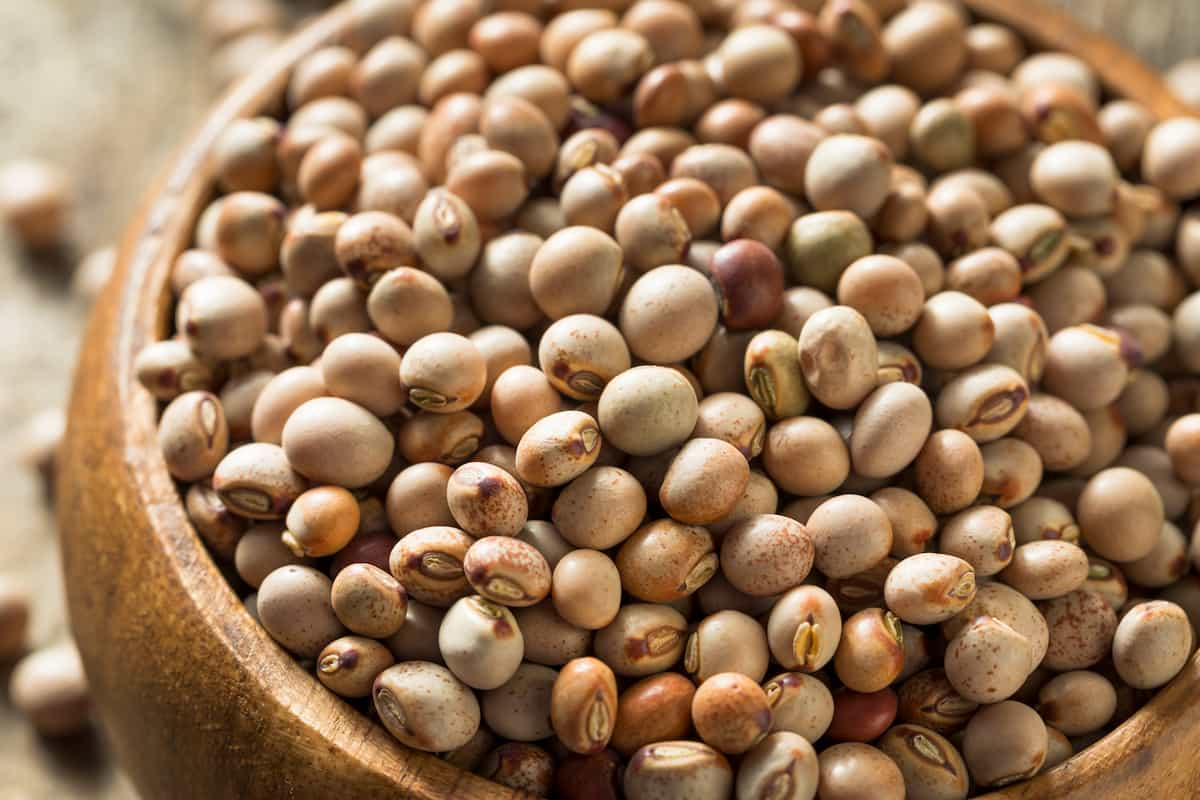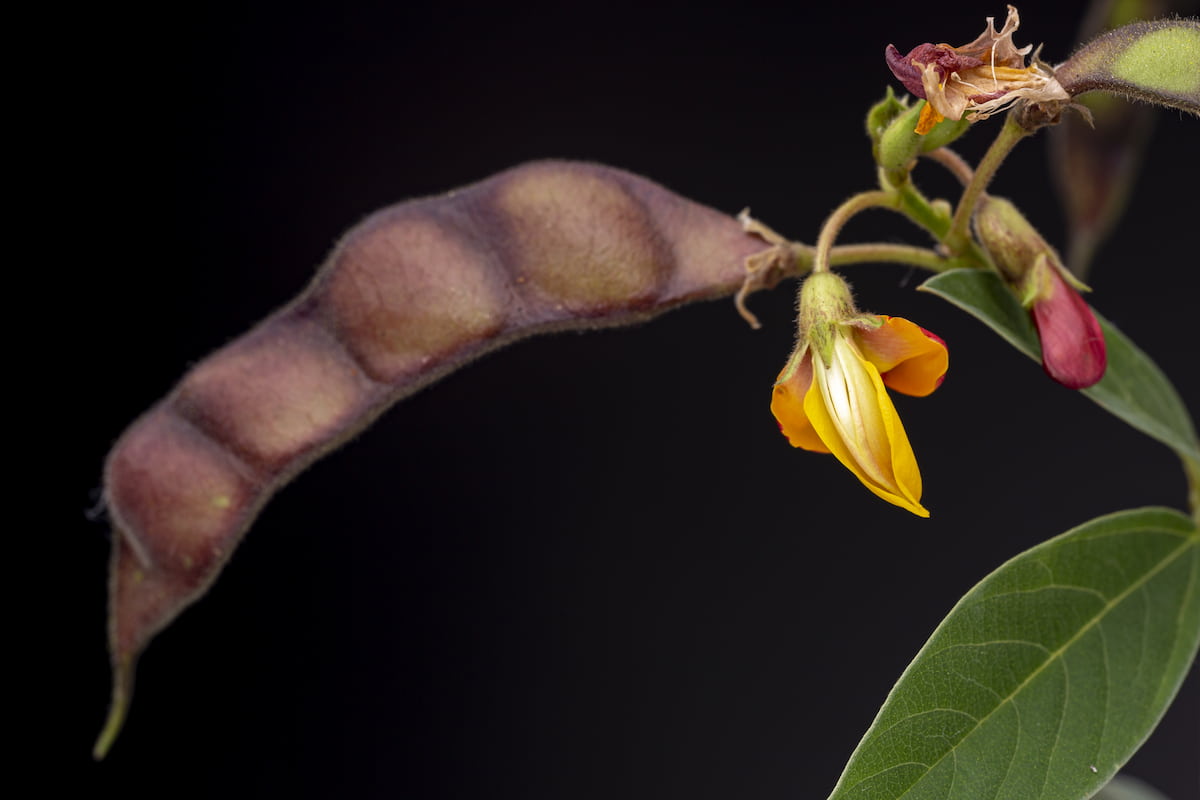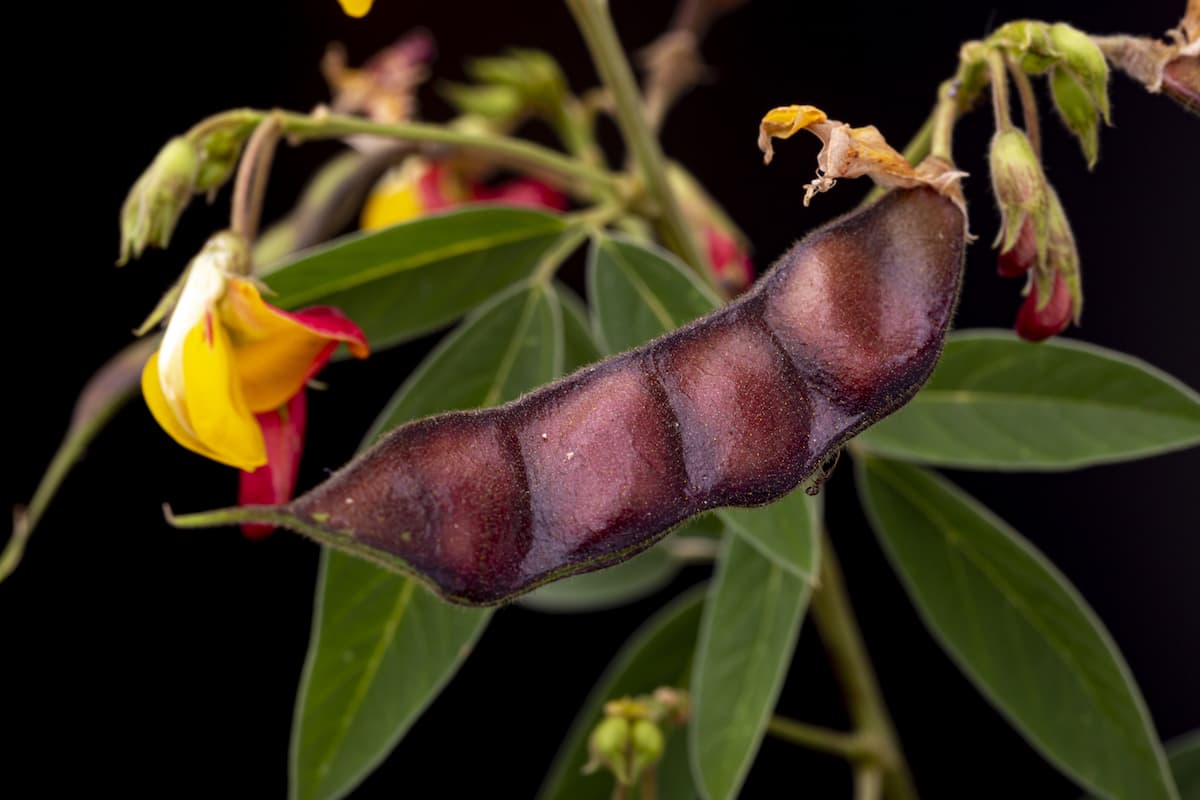Pigeonpea, also known as red gram or Tur or Arhar, is an important crop and pulse crop after chickpea. It is a deep-rooted and drought-tolerant crop, making it useful in areas with low and uncertain rainfall and lighter soils. Traditionally, long-duration pigeon pea varieties have low yield potential and are susceptible to different diseases and pests, as well as frost damage in northern India in December and January.

Short-duration varieties with high-yield potential have been developed recently and can be harvested by the end of November. Pigeonpea is mainly consumed as ‘dal’ and is rich in iron, iodine, and essential amino acids. The crop is also used as cattle feed, and its straw and green leaves can be used as fodder. As a leguminous plant, pigeon pea can fix atmospheric nitrogen and help restore nitrogen to the soil.
Red Gram Production Guide
Best Package and Practices of High Red Gram Production
Following good cultivation practices is crucial to achieving high red gram output. This involves picking the best variety, improving soil quality, using high-quality seeds, spacing plants properly, managing weeds quickly and effectively, controlling pests and diseases, and managing nutrients appropriately. Increased harvests can also be achieved through conservation tillage, crop rotation, and intercropping. Furthermore, effective post-harvest management techniques, like threshing and drying, can preserve the quality of the produce and lower losses.
Land/ Field Preparation and Soil Requirements for Red Gram
Pigeonpea grows best in well-drained, light-textured, neutral-pH of 6.5 to 7.5 soil. Deep plowing with soil turning plow, 2-3 rounds of discing and harrowing, and planking prepare the land for pigeon pea. This ensures soil tilth and aeration. To prevent water stagnation and make a crop-friendly environment, level the soil, remove weeds and till it. Pigeonpea requires good draining.
Temperature, Climatic, and Rainfall Requirements for Red Gram
The crop pigeonpea is primarily grown in semi-arid areas of India and does well in tropical and subtropical climes. The crop can withstand temps between 26°C and 30°C from June to October and between 17°C and 22°C from November to May. When the crop is exposed to cloudy weather or monsoon circumstances, poor pod formation can occur because it is extremely sensitive to low radiation during pod development. As a result, it’s crucial to ensure the crop is grown in locations with enough sunlight to promote vigorous growth and profuse yields.
Seed Rate, Seed Treatment, and Spacing for Red Gram
Row-to-row spacing of 45–60 cm and plant-to-plant spacing of 10-15 cm is recommended for early maturing types, with a seeding rate of 20–25 kg/ha. Medium to late maturing types needs to be sown at a rate of 15-20 kg/ha, with the plant to plant distances of 15-20 cm and row-to-row distances of 60-75 cm. For the prevention of disease and to encourage plant development, seed treatment is essential.
Thiram and carbendazim are fungicide alternatives, and Rhizobium and PSB culture can encourage nitrogen fixation. Early maturing varieties are popular in irrigated areas because they can be harvested before frost or cyclones, making them ideal for multiple cropping systems. Early pigeonpea planted before June monsoons gives more. Planting late reduces crop length, height, branches, and pods.
Sowing Method for Red Gram
Multiple methods can be used to plant red gram, including flat sowing, broad bed-furrow (BBF) for extra-early varieties, and ridge-and-furrow for late-maturity varieties. The raised bed technique is also advised for intercropping with soybeans, using dibbling at a depth of 2 inches and rows spaced 15 feet apart. (2 pairs of Tur on bed).
In contrast to flat sowing, which offers inferior aeration and nodulation, the BBF method is appropriate for fields with poor surface drainage and waterlogging. In some places, pigeonpea is grown in bunds in former rice fields. Extra-early and middle to late duration genotypes are sown at ICRISAT using BBF and ridges-and-furrows, respectively.
Crop Rotation and Mixed/Intercropping in Red Gram
Redgram integrates into many crop rotations and intercropping methods. India grows it in summer, and Kharif and Rabi. Redgram, corn, sugarcane, and groundnut can be intercropped. Mix it with urdbean, green gram, and small millets. Intercropping systems determine the cropping ratio and seed rate. Redgram can rotate with rice, soybean, and black gram.
In case you missed it: How to Start Sheep Farming in 10 Steps: Business Plan, Management, and Care

Manure & Fertilizer Applications in Red Gram
A soil analysis is advised to establish the recommended fertilizer rates for Red Gram. The furrows for the fertilizers should be 5 centimeters deep and 5 cm apart from the seed. At the time of sowing, basal doses of 25–30 kg N, 40–50 kg P2O5, and 30 kg K2O per ha region should be applied.
Apply 20 kg S ha-1 as a baseline for secondary and micronutrients in medium black and sandy loam soils. Apply 40 kg S ha-1 if red sandy loam soils are lacking in S. Apply 3 kg of zinc per acre of sediment. Spraying 5 kg of zinc sulfate + 2.5 kg of lime dissolved in 800-1000 liters of water per hectare is advised for standing crop zinc shortage. Foliar applications of 0.5% FeSO4 at 60, 90, and 120 DAS are advised for light grainy soils.
Weed Control and Herbicide Application in Red Gram
Red Gram’s first 60 days require weed control. Two mechanical weedings are needed 20-25 and 45-50 days after sowing. Pendimethalin can prevent weeds for 50 days and act as a pre-emergence herbicide. If weeds remain, use fluchloralin or alachlor. Lasso kills weeds. Short-duration legume intercropping reduces weed attacks. Herbicide use is essential because frequent rains make mechanical weeding difficult.
Water Management/ Irrigation in Red Gram
Red Gram is a drought-tolerant crop, but it needs three irrigations during the branching, flowering, and podding stages if there is an extended drought. Pigeonpea requires good drainage to thrive, and ridge planting can help in areas with poor subsurface drainage. Pigeonpea is primarily grown under rainfed conditions during the monsoon season. Still, it may react to irrigation during prolonged periods of moisture stress. Under rainfed conditions, two irrigations at the pre-flowering and flowering stages can boost yields. C-11 responds to watering better than NP(WR)-15.
Disease Control in Red Gram
Wilt, Sterility mosaic disease, Phytophthora blight, and Alternaria blight impact pigeon peas and are major diseases of Red gram. Each disease has symptoms and treatments. Trichoderma viride treatment of seeds, mixed cropping with sorghum, and growing resistant varieties like Amar, Azad, Asha, and Maruthi can prevent wilt. Spraying Fenazaquin 10 EC and growing Pusa 885, Asha, and Bahar resistant varieties can manage sterility mosaic disease. Good drainage, crop rotation, and resistant cultivars prevent Phytophthora and Alternaria blight.
Pest Control in Red Gram
Insect pests that cause major damage to red gram include pod borers, tur pod flies, plume moths, and pod-sucking bugs. The most dangerous pest, causing harm to grains and pods, is pod borers. Pheromone traps, sprinkling Emamectin benzoate or Indoxacarb, and handpicking larvae are all ways to control pod borers. Spraying azadirachtin or neem seed kernel extract will contain the tur pod fly and plume moth. Pod-sucking insects can be controlled by applying carbofuran to the soil, sprinkling with Ha NPV or aromatic vegetation, or handpicking immature insects.
Harvesting and Threshing of Red Gram
Red gram harvesting is done when two-thirds to three-fourths of the pods change color to brown. The plants are cut with a sickle and left to dry in the sun for 3-6 days. Threshing is done by beating the pods with sticks or using a Pullman thresher. The seeds are sun-dried for 3-4 days to bring their moisture content to 9-10% for safe storage. Fumigation with ALP and mixing with inert material or plant products can prevent pests in storage.
In case you missed it: How to Start Goat Farming in 10 Steps: Business Plan, Management, and Care

Red Gram Yield per Acre
Red gram can produce 8-10 quintals per acre. Still, it can produce up to 30 quintals per hectare with enhanced technology and irrigation. The yield of fuel sticks per hectare can reach 50 to 60 quintals. The yield depends on the maturity group of the variety and the climatic conditions.
Conclusion
Red gram cultivation requires proper land preparation, seed selection, sowing, irrigation, and pest control. With appropriate agronomic practices, farmers can achieve high yields and profitability.
- Feed Your Flock for Less: Top 10 Tips to Save on Chicken Feed
- Ultimate Guide to Ossabaw Island Hog: Breeding, Raising, Diet, and Care
- Hatching Answers: The Top 10 Reasons Your Chickens Aren’t Laying Eggs
- Eggs and Economics: Breaking Down the Cost of Raising Backyard Chickens
- Defend Your Greens: Proven Methods to Keep Iguanas Out of Your Garden
- Ultimate Guide to Cinnamon Queen Chicken: A Comprehensive Guide for Beginners
- Ultimate Guide to California Tan Chicken: Breeding, Raising, Diet, Egg-Production and Care
- Ultimate Guide to Marsh Daisy Chicken: Breeding, Raising, Diet, and Care
- 10 Types of Chicken Farming Businesses You Can Start for Profits